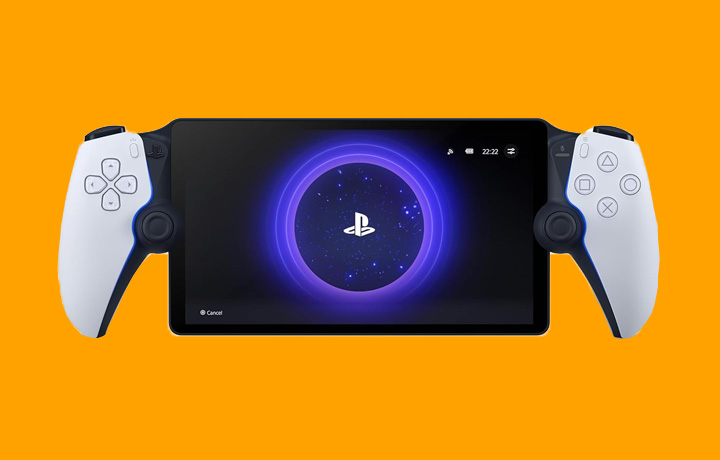Sony PlayStation Portal Review: “Pros And Cons” And Reasons To Buy It
Sony introduced the PlayStation Portal, a unique device that bridges the gap between traditional console gaming and on-the-go experiences. Priced at $199, this handheld device promises to stream games seamlessly from your PS5, but is it worth the investment? Let’s dive into the details and find out.
- More:
- Infinix Smart 8 Review: “Pros, Cons” And Reasons To Buy It
- Samsung Galaxy Z Flip 5 vs. Oppo Find N3 Flip: Which Should You Buy?
Design:
The PlayStation Portal boasts a design that echoes the familiar aesthetics of the PS5. In an elegant white color, it complements its console counterpart. The device is reminiscent of a split DualSense controller, with an 8-inch screen neatly sandwiched between the two halves. The ergonomic design aligns with Sony’s commitment to user comfort, ensuring a pleasant gaming experience. The grip feels natural, and the placement of buttons and controls is intuitive for anyone familiar with the DualSense controller.
However, some reservations arise regarding the display’s vulnerability, protruding from the bottom with minimal protection. While the design is aesthetically pleasing, its durability might be a concern, especially for those prone to accidents. Only time will reveal how well the device holds up to everyday wear and tear.
Setup:
Setting up the PlayStation Portal is a straightforward process. Connecting it to Wi-Fi, signing in with your PlayStation account, and detecting your PS5 take just a few minutes. However, users need to ensure that their PS5 is in rest mode for the Portal to connect successfully. The initial firmware update and UI synchronization are standard procedures, and once completed, the device is ready for action.
Connection & Gameplay:
The PlayStation Portal’s performance over home Wi-Fi is generally stable, even at a considerable distance from the router. However, occasional lag or jitter might occur when pushing the device to its limits, especially in multiplayer or fast-paced online games. The device’s reliance on a stable internet connection restricts its usability in certain environments, making it less suitable for public Wi-Fi or on-the-go gaming.
Single-player experiences shine on the PlayStation Portal, with impressive latency and responsiveness. Yet, competitive gaming scenarios may expose its limitations. The absence of SIM support further confines its usability to locations with reliable Wi-Fi, limiting its potential as a truly portable gaming solution.
PS Portal Settings:
As a streaming device, the PlayStation Portal lacks the ability to install games independently. Instead, it mirrors the PS5’s UI, offering limited customization options. The settings menu provides basic functionalities, including network configuration, system settings, and display adjustments.
The absence of Bluetooth support limits wireless headphone options, restricting users to Sony’s proprietary Pulse Elite and Pulse Explore headphones.
- Xiaomi 14 Full In-depth Review: Pros And Cons
- Samsung Galaxy S23 vs. Galaxy S23 FE: Reasons To Go For Each Of Them
Display:
The 8-inch LCD display on the PlayStation Portal delivers a vibrant and crisp visual experience. While it falls short of the deep contrasts offered by OLED technology, the Full HD resolution ensures clarity in graphics and colors. The display competes favorably with other handheld gaming devices, but those accustomed to the richness of OLED may perceive a slight downgrade.
Audio:
Audio features on the PlayStation Portal cater to various preferences. The inclusion of a headphone jack provides privacy for users opting for wired headphones. Surprisingly, Bluetooth support is absent, limiting wireless audio options.
The built-in speakers, located on the top edge, deliver impressive sound quality, filling a room effectively at maximum volume. Haptic feedback mirrors the experience of the DualSense controller, adding an immersive layer to gameplay.
Battery Life:
The battery life of the PlayStation Portal varies based on the intensity of the games being played. Rumbling feedback in games like God of War and Spider-Man tends to drain the battery faster than less demanding titles.
On average, users can expect around 5 hours of game streaming on a full charge. Fortunately, the option to play and charge simultaneously mitigates concerns about abrupt interruptions during longer gaming sessions. Alternatives, Pros, and Cons on the NEXT PAGE…










